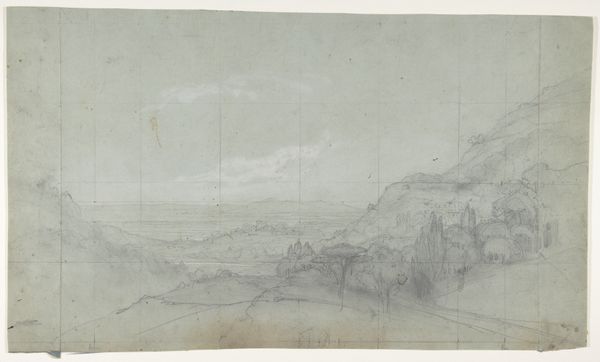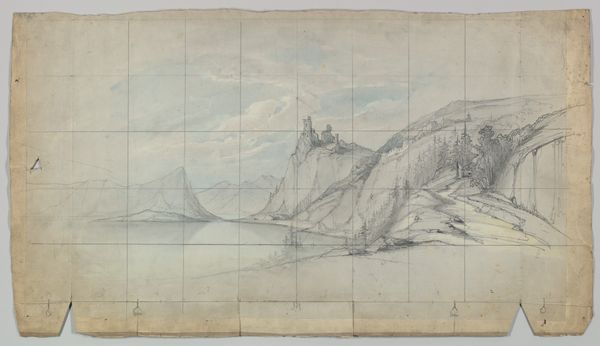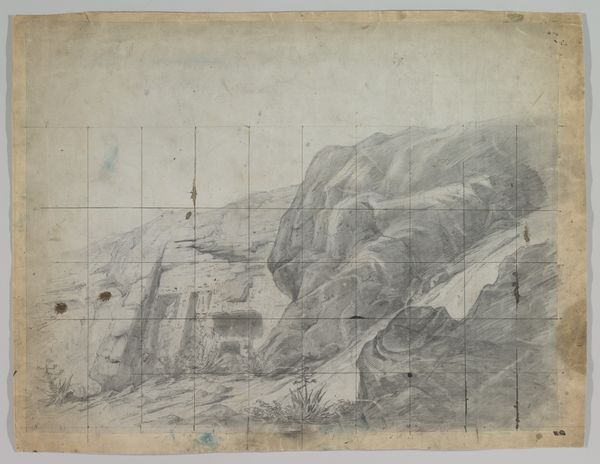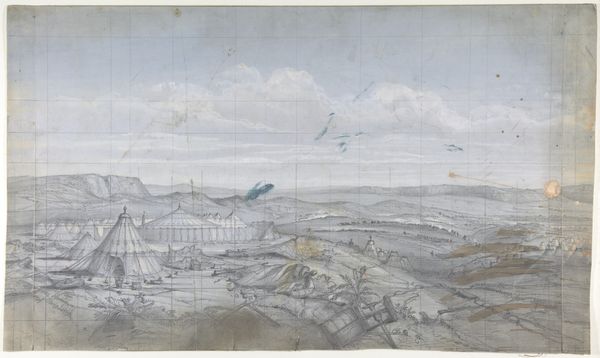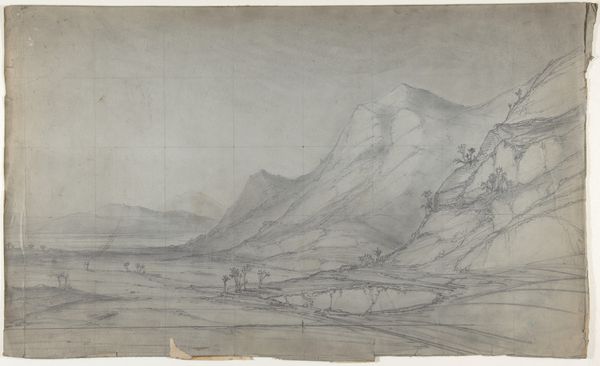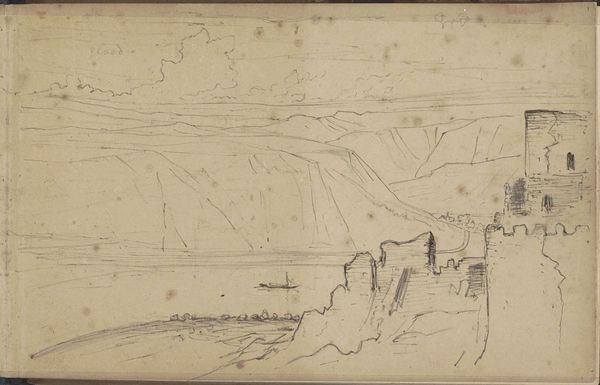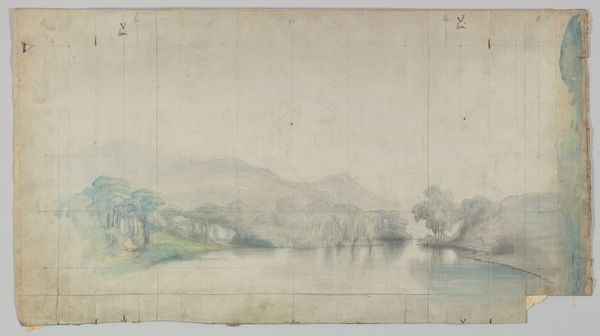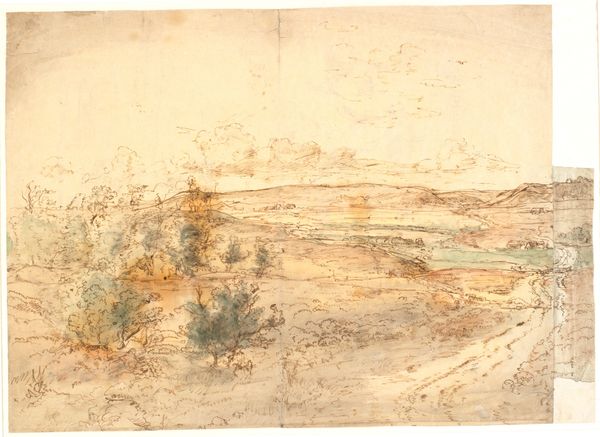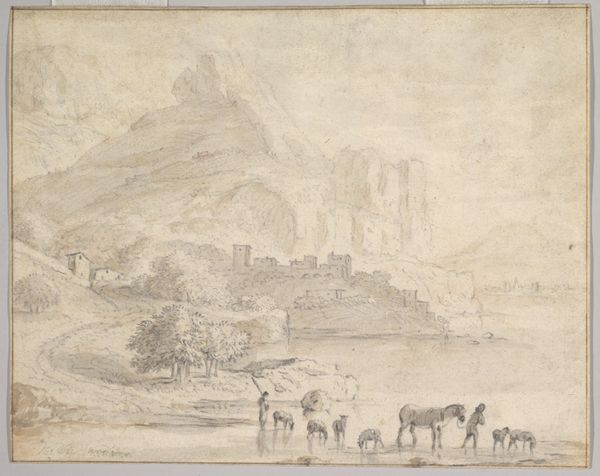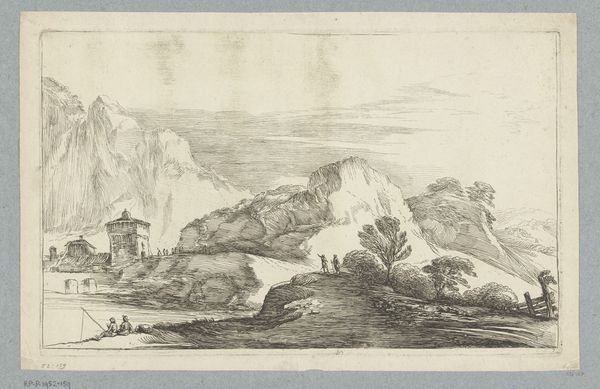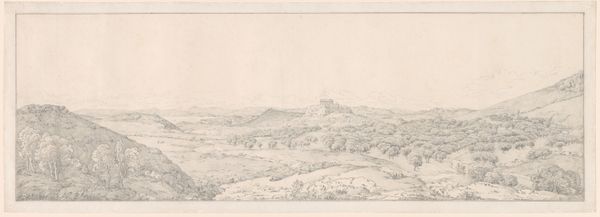
Design for a Stage Set at the Opéra, Paris 1830 - 1890
0:00
0:00
drawing, print, watercolor
#
drawing
#
water colours
# print
#
impressionism
#
landscape
#
watercolor
#
watercolour illustration
Dimensions: sheet: 11 1/8 x 21 13/16 in. (28.2 x 55.4 cm)
Copyright: Public Domain
Editor: This is Eugène Cicéri's "Design for a Stage Set at the Opéra, Paris," created sometime between 1830 and 1890 using watercolor and print. It's beautiful! There's a softness to the hills and the overall composition feels vast yet gentle. How do you interpret this work? Curator: I see the labor involved in producing the scene for the opera, which must have been enormous in those days. Think about the materiality of the stage set itself: wood, canvas, paints – all constructed to create this illusion. How does knowing this design would become something monumental change how you view the artwork itself? Editor: It's easy to forget about all that, focusing on the "art" rather than the construction. That's an interesting point! Does the printmaking element alter how you look at the artwork? Curator: Absolutely! It’s a design for mass production, in a way. The print allows for duplication, distribution, and scaling of the image. The material reality of theater in the 19th century dictated what the audience consumed. Where was the focus, do you think – on the "originality" or on spectacle for paying viewers? Editor: I suppose spectacle for viewers in those times. Seeing it as a plan makes me appreciate the material planning needed, which is almost invisible in the finished product, the spectacle, in other words. Curator: Exactly! It directs our gaze not to the final art object, but toward the immense labor involved, and reveals the socioeconomic implications of such a process. It's all about what *produces* the art. Editor: I never would have thought about it this way. It's helpful to think about the art in relation to its production. Curator: Understanding the art involves focusing on all that the eye often ignores – and perhaps then, the hand rediscovers!
Comments
No comments
Be the first to comment and join the conversation on the ultimate creative platform.
